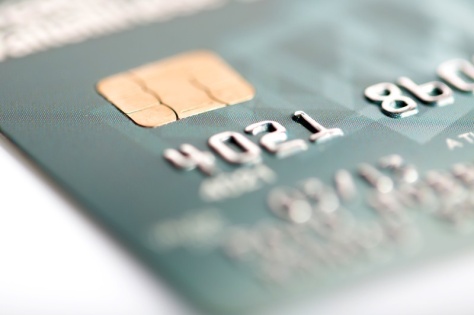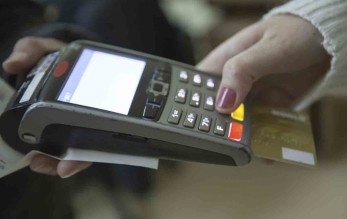5 Things You Need To Know About Chip-Enabled Credit Cards

Chip-enabled credit cards, or ‘smart cards’ will be making their official U.S. début in only six months, on October 1st, 2015. This is the date of the so called ‘liability shift’ where banks and credit card issuers will be shifting the liability created by fraudulent credit card activity from themselves to merchants. Now this shift really only takes place when a merchant fails to upgrade to POS technology capable of processing chip-enabled cards. Nevertheless, this deadline allows for a credible line in the sand where the U.S. is officially following the footsteps of the Europeans in fighting credit card fraud.
With the deadline approaching I thought I would explain five of the major questions on this issue:
1. What benefit comes out of chip-enable cards?
The benefit of using a chip-enabled card (also known as an EMV card for Europay, MasterCard, and Visa) is the increased security that comes from the chip imbedded in the front of the card rather than the traditional mag stripe on the back. What the chip offers is unique coding for each transaction processed with that chip. Information held in the traditional mag stripes of credit cards is static, that is if someone steals that data it can be used to make fraudulent purchases over and over again until the card is turned off. With chip-enabled cards each transaction is unique. Therefore if the information is stolen, when the card is used again the transaction will be declined because the unique code that was stolen cannot be used again.
2. Will my old credit card work after October 1st?
Yes. October 1st, 2015 is not a hard deadline. Merchants can upgrade their processing hardware at their own pace, however it is at their own risk after the deadline.
For the customer experience, the difference between the new hardware and the old is you no longer swipe your credit card but instead insert the card (a process called ‘dipping’) into a reader so that the card can communicate with the issuing financial institution. The transaction will take slightly longer than the traditional mag stripe transactions however we’re talking in seconds, not minutes.
3. Do I still physically sign for my purchases at a retailer?
That depends on what type of hardware the retailer is using. There are two types of chip-enabled technology: Chip-and-PIN and Chip-and-signature. The purist form of smart card technology employs Chip-and-PIN because a private PIN is more secure than a physical signature on a receipt. It is this kind of technology that has led to an over 34% decline in credit card fraud in the U.K.
Chip-and-signature allows for the chip to validate the transaction however, a traditional signature is still used to authenticate the user. This is not as secure as Chip-and-PIN however “This is a great first step” (Adam Levin, chairman and co-founder of Identity Theft 911.)
Chip-and-signature is what Americans will see in the first phase of transition. Over the next few years the expectation is that issuing financial institutions will start issuing cards that are compatible with Chip-and-PIN.
4. What if a retailer can’t accept my chip-enabled card even after October 1st?
In the first phase of the U.S transition to chip-enable cards, credit cards will be issued with both a chip and a traditional mag stripe. This way the card can be used at both chip-enabled and non-chip-enabled POS systems. Keep in mind however, the increased fraud protection will not be there for the customer or the merchant whenever the mag stripe is used to settle a transaction.

5. As a merchant, what do I need to do?
Merchants need to install hardware that can process chip-enabled cards. As long as merchants are up to date with the technology that is offered, they will not be subject to the ‘liability shift.’
October 1st, 2015 represents not the end, but the beginning of the transition to smart cards. There is still much work to be done to decrease credit card fraud in the U.S., especially in the area of internet credit card transactions where the physical card is not present. This is something the introduction of Bitcoin is attempting to solve as well. After enduring the breaches of Target, Home Depot, Anthem and the like I expect customers, merchants and issuing financial institutions will be looking for the more than 34% decrease in fraud the U.K. experienced, if not more.
Do you think smart card technology will have an effect on credit card fraud in the United States? Please leave me your comments.
One thought on “5 Things You Need To Know About Chip-Enabled Credit Cards”